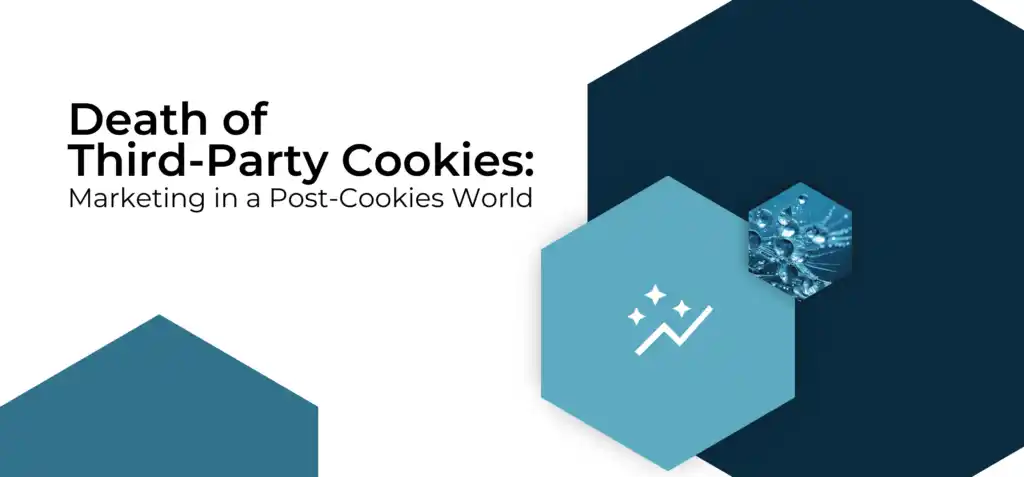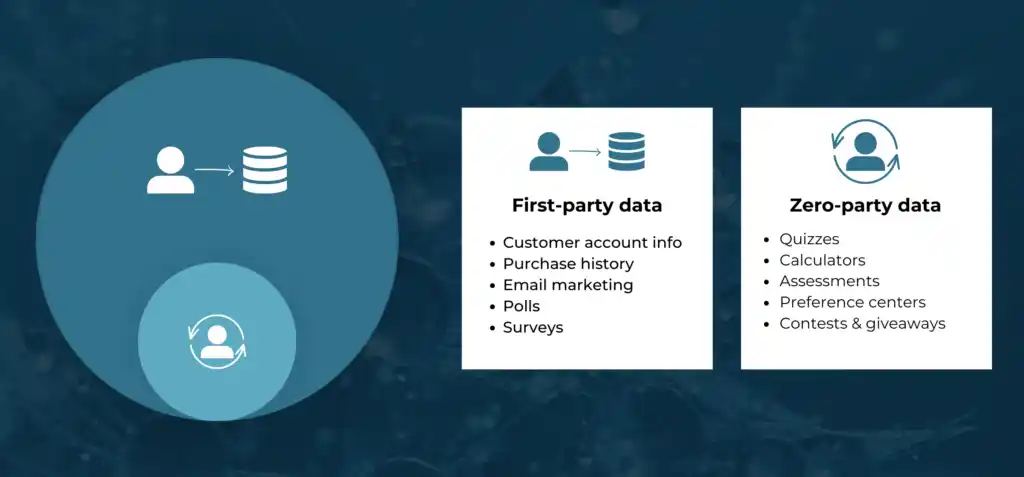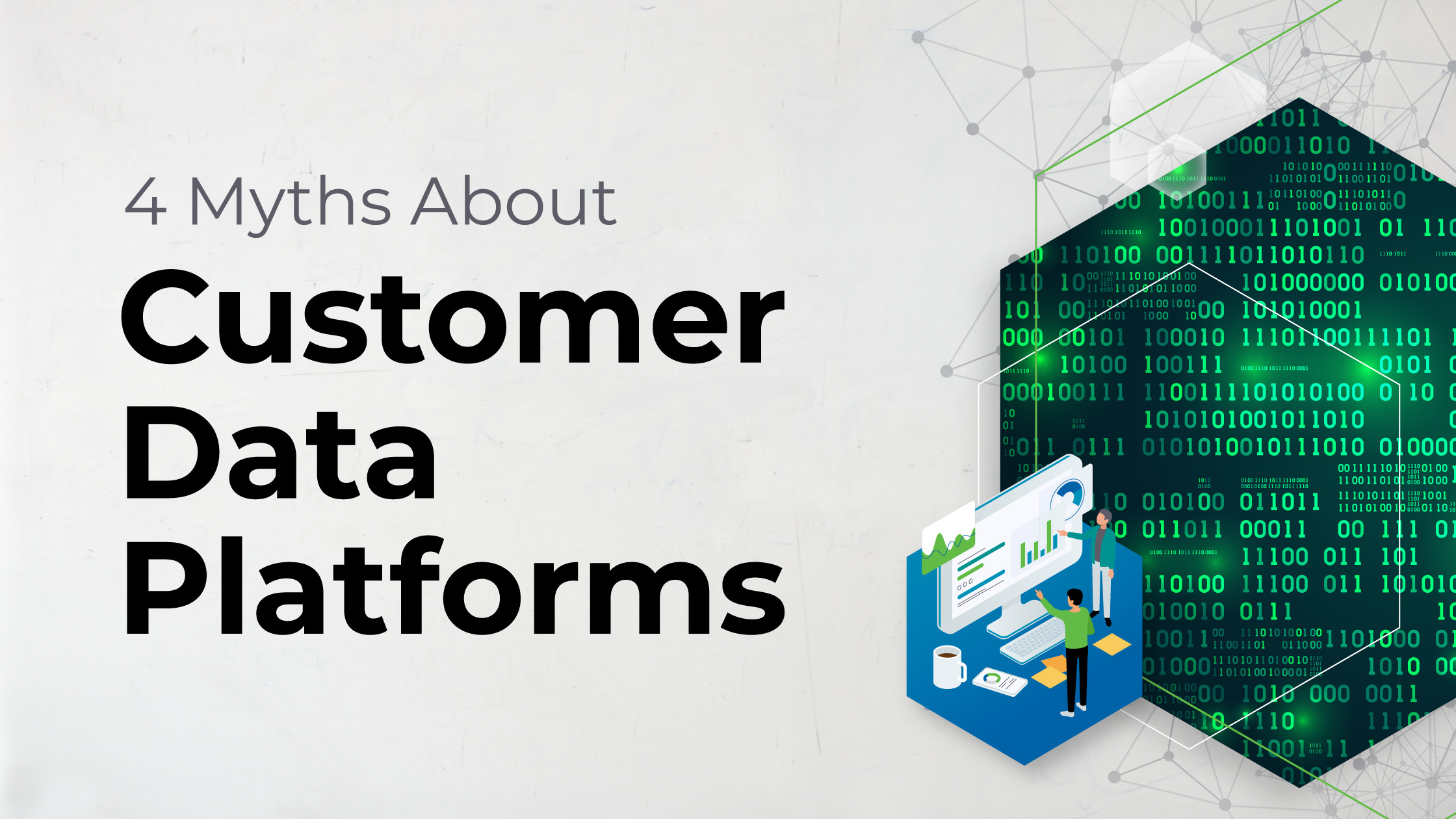
Haven’t we been talking about marketing cookies for a decade? Seems like it, doesn’t it?
And after all that pontificating, a MASSIVE step toward post-cookies marketing has officially landed on everyone’s doorstep.
Today, we’re exploring:
- How and why Google is killing cookies
- The impact of the death of third-party cookies
- Our top 6 tips for post cookie advertising
IMPORTANT NOTE: Not ALL third-party cookies are dying. Some non-Google web browsers will still use marketing cookies, but Google Chrome holds the lion’s share of the market and they’re decidedly anti-cookie, so our discussion below is focused there.
What are third-party cookies?
Let’s say you’re browsing for a pair of comfy shoes and land on a website called Sole Support.
A third-party cookie is created by a domain other than SoleSupport.com for the purpose of tracking everything you do while on that site, and a considerable amount of your web activity after you leave the website.
Why would SoleSupport.com install third-party cookies? For the ads.
Cookies facilitate data collection; they track and store details about each user’s preferences, buying habits, the products you spent the most time looking at, etc.
The SoleSupport.com marketing team could then use this data to deliver targeted and highly personalized ads based on your browsing history.
Why is Google removing cookies?
Back in a 2020 blog post announcement, Google cited privacy protection as the genesis of this decision, explaining:

Google’s policy lines up with increasing data privacy regulations like the General Data Protection Regulation (GDPR), the California Consumer Privacy Act (CCPA), and a general uptick in public concern about how brands are storing and using customer data.
Google is ensuring that all digital marketers get on board by replacing Universal Analytics (UA) with Google Analytics 4 (GA4). On July 1st, 2023, Universal Analytics will stop processing data, which will require all Google users to make the transition to GA4.
And that’s why you’re hearing a ringing sound in your ears – it’s the death knell of third-party cookies because GA4 doesn’t support cookie-based behavior.
Cookies themselves will still function in Chrome until 2024 but without the analytics, marketers won’t be able to leverage that data in the way they’ve been used to.
What is the impact of the death of cookies?
For many years, third-party cookies have been the driver of powerful remarketing tools like Criteo. The ability to deliver highly personalized ad targeting based on an individual user’s browsing behavior and interests helped many brands soar past revenue projections.
Third-party cookies were like the radar target lock feature of marketing. You just had to point the tech in the general direction of the conversion you wanted, and (with a solid value proposition and clear messaging) voila.
Now, without that third-party cookie data, publishers and advertisers will have to (brace yourself) return to core marketing principles.
There’s a reason folks keep saying, “What was old is new again.”
Marketing tactics long been perceived as “old” (email, direct mail, print, OOH) are new again.
This has been a jolt for many marketers who are being forced to think about data in a whole new way.
For some, entering a cookie-less world requires a substantial worldview shift and that adjustment is happening slowly. Others have been preparing for a while and are therefore finding this transition less cumbersome.
Whatever boat you’re in, you’ll be just fine. This isn’t the apocalypse of marketing – just a nudge to get back to the basics.
- Invest in owned data.
- Obsess about learning more about the user and target.
- Focus on outcomes you can control.
Our 6 recommendations for post-cookie marketing use
Nobody panic! The death of third-party cookies does not equal the death of your revenue. Here are our top 6 recommendations for reinvigorating your overall growth strategy in a cookie-less world:
1. All roads lead to first-party data
This is the big kahuna. To future proof your brand, first-party data is more crucial than ever.
First-party data is any data you gather directly from your website visitors and customers. Users willingly hand over information about themselves and provide consent for you to use that data according to the terms and conditions you defined up front.
First-party data comes straight from the horse’s mouth, and is therefore considered highly reliable and trustworthy. This is consent-based marketing.
Examples of first-party data include:
- Email address
- Demographic details
- Purchase history
- Website behavior
- Preferences.
Thriving in a post-cookies world requires learning how to mine, harness, and act on first-party data.
Any voluntarily-provided information can be used to generate customer match lists, which then proves very useful for highly effective remarketing.
The importance of effectively managing “in the moment” data capture (newsletter or gated content opt in, form submission, a purchase, etc) cannot be overstated, so much so that recommendation #2 is…
2. Go a level deeper with zero-party data
This is a subset of first-party data where users provide more specific details about their preferences, interests, and opinions.
Think of first-party data as a macro collection of data points about a potential customer.
Zero-party data is the micro side of the coin; the finer details that provide a much deeper layer of clarity about who this person is, what they expect, what their pain points are, and the solution they need/want.

3. Consider contextual advertising
Contextual targeting is a method of displaying ads based on a user’s immediate interests, which is gauged by analyzing the context of the webpage they’re currently on. Unlike third-party cookies, it doesn’t track browsing history or store personal information.
Let’s pick up our SoleSupport.com example above to illustrate this…
So you’re browsing the styles on SoleSupport.com and notice they have a blog. You mosey over there and click into a blog post called “The 7 Best Summer Hiking Shoes.”
If SoleSupport.com is utilizing contextual digital advertising, you might then see an ad for accessories they sell, like hiking socks, a hydration backpack, or the exact hiking shoes you put in your shopping cart but didn’t purchase.
Based on your choice to read the post about hiking shoes, contextual marketing assumes that anything in the ecosystem of hiking would be of interest and feeds you a relevant ad.
CLARIFICATION: While contextual advertising tech can automate this process for us, defining contextual targets is the job of every marketer. In a post-cookies world, understanding our audiences and their behaviors will be even more critical so that we can feed Google and other ad platforms the right information.
Sure, contextual marketing is not as targeted as third-party cookies allowed us to be, but lamenting that fact isn’t getting anyone anywhere. Complaining that it’s Monday doesn’t change the fact that it’s Monday.
Privacy-forward marketing is the requirement now, so high-performing brands have to adjust and optimize within this new landscape.
4. Ensure accurate GA4 event tracking
Third-party cookies are leaving the Google ecosystem, but that doesn’t mean we have to ditch all our powerful martech tools.
Make sure you have an expert set up accurate event tracking in GA4. There’s still lots of data for marketers to work with – make sure it’s reliable data.
GA4 event tracking is essential to ensure data integrity so you can successfully analyze user behavior and measure performance accurately. GA4 is a cornerstone for marketing teams who need to pivot fast and trust data-driven optimization decisions.
5. Segment and regularly update your CRM
Next to your marketing dashboard (see recommendation #6 below), your CRM should be your best friend.
A thoroughly segmented CRM that’s audited regularly for accuracy allows brands to:
- Leverage insights about audience segments to produce more targeted ad spending
- Provide a more personalized and relevant customer experience
- Engage in a more meaningful way to drive retention and loyalty
- Allocate talent and budget more effectively, based on segment value
- Identify emerging trends and subsequent growth opportunities.
6. Connect all martech systems with ONE source of truth
Although we just sang the praises of GA4 and your CRM, we’re math-minded marketers, which means we love and use any and every system that drives growth.
The trouble is that most brands are operating with a disjointed smattering of systems that aren’t talking to each other, which then restricts accurate data analysis and performance improvements.
Whether you’re using three platforms or eight, they all need to port into one source of truth.
Maintaining a centralized marketing dashboard means that you’re optimizing against your business agenda, and not based on the limitations of any one platform.
TL;DR on the death of third-party cookies
- By activating third-party cookies, brands allowed external domains to track and gather data on their website visitors, and then used that data to generate highly targeted ads.
- Concerns about online data privacy have been growing for years, and have culminated in regulations like GDPR and CCPA.
- Effective July 1st, 2023, Google is prioritizing user privacy by sunsetting Universal Analytics and requiring all users move to Google Analytics 4, which does not support cookies.
- To succeed in a post-cookies world, many brands are turning to “old” tactics like email, print mailers, OOH and more.
- Our #1 recommendation for post-cookies marketing is to invest heavily in first-party data, which allows you to customize the customer experience and more effectively manage marketing spend.




